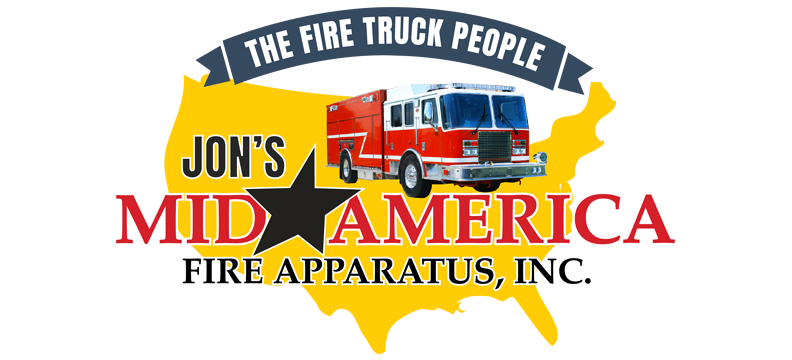Choosing the right fire apparatus is a crucial decision for your department and the safety of your community.
Whether you have a single fire truck or an entire fleet of specialized emergency vehicles, each apparatus must abide by minimal quality standards to ensure that it’s ready to respond on a moment’s notice.
But it’s more than just the apparatus as a whole that counts. When deciding fire truck specifications for your next purchase, you must also consider a wide range of components that each carry their own list of considerations.
Today we’ll give a few examples of fire apparatus parts you’ll need to consider when laying out specs for your next vehicle.
Which Fire Apparatus Parts Do You Need?
When considering fire truck components, you’ll need to think about fire-specific and more general vehicle-related features.
The specific parts you choose may also depend on the type of vehicle you’re purchasing, such as an aerial or pumper.
Individual fire-related components often come with their own quality standards and options to fit the needs of your department and community. Here are some examples:
- Pumps
- Control panels
- Nozzles
- Monitors
- Valves
- Foam systems
Each component also has its own set of parts that may be standardized or customized to meet applicable standards and your departmental priorities. When choosing a fire pump, for instance, you must consider packing, gauges, rods, valves and priming features.
Water pumps vary widely on a range of capabilities:
- Water flow measured in gallons per minute (gpm)
- Pressure measured in pounds per square inch (psi)
- Water and foam concentrate consumption
- Size – a compact design is generally better for saving space and weight
- Ease of using the operator panel
Besides your water pump, extinguishment tools you must think about include monitors, valves, controllers, nozzles and dry sprinkler powder aerosol, to name a few.
- Monitor — What are your needs in terms of flow capabilities? Battery? Electronics? Some departments are adopting wireless monitors for added flexibility.
- Valves — First, you have different types of valves including distribution, collector and drain valves. Second, what are your needs with respect to discharges, pressure relief and ability to extend water flow capabilities? Third, look at other features. Should your valve controller be electronic or manual? Adjustable? Should it come with joystick modules?
- Nozzles — Look for the appropriate length, and consider various features including pistol grips, Spinning teeth or fixed teeth, and fog pattern styles.
- A dry sprinkler powder aerosol may be needed for fighting indoor fires.
Technology will also play a big role in selecting water control components, with more electronics creating a sort of “smart” apparatus.
- Many apparatus feature multiple functions and displays consolidated onto a single control panel. This adds convenience in managing engine speed, pressure, discharges, foam, valves and more.
- Digital control panels can be located anywhere on the vehicle and connected wirelessly to monitors, valves and other components. Some models can be interfaced with smartphones and tablets, allowing retrieval of vital information and sharing of data between the scene of an emergency and personnel back at the station.
Besides fire-specific components, you must also scrutinize vehicle-related parts of a fire truck, including brakes, engine, transmission, doors and lighting. Lighting options include traditional incandescent bulbs or energy-saving LED lamps.
Criteria for Choosing Fire Truck Parts
Take time to research the individual components needed for your next apparatus.
Sometimes specific components have needs that are independent of the overall vehicle, and emerging technologies appearing in the latest fire apparatus equipment add new complexities and possible costs to your decision.
Below are a few criteria you’ll want to use in evaluating fire apparatus parts.
- Component reliability. Research which components have the best service records and require less unexpected maintenance. If a component goes down, the apparatus goes down while repairs are being made, so reliable parts are essential for protecting the safety of your community.
- Ease of use. If a component features cutting edge technology, how easy is it for operators to learn how to use? Can repairs be done by fire department personnel or do they require an outside technician with specialized knowledge?
- Need for training. This goes hand-in-hand with ease of use. Smart components may make operation easier in the long-run, but in the short run they may introduce complexities that require training. Does the manufacturer provide easy-to-read materials, or any other assistance to help firefighters learn to use and perform maintenance on the new equipment?
- Maintenance requirements. When evaluating components, ask a lot of questions about maintenance. How often will it take place? What tasks are required? Who is qualified to perform maintenance tasks? Can repairs be done in-house or will the apparatus have to be sent off-site?
- Component warranties. Don’t ignore the warranty. Familiarize yourself with exactly how repairs are to be handled for parts under warranty. Be clear about what is and isn’t covered.
Do you have questions about choosing your next fire apparatus and equipment?
Contact Jon’s Mid America. We’ll review your requirements and provide information to help you select fire apparatus parts that will meet the needs of your department and keep your community safe.



